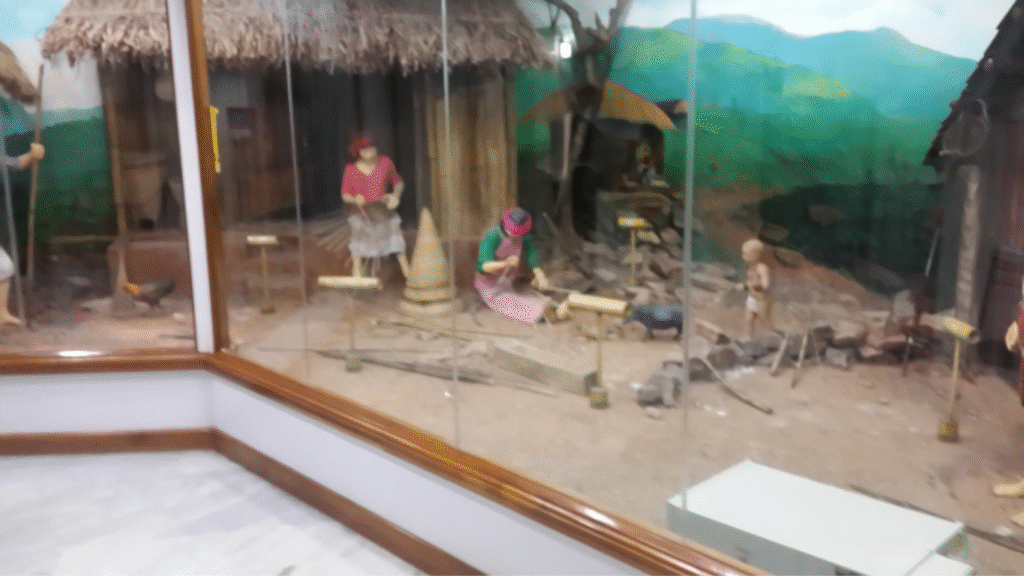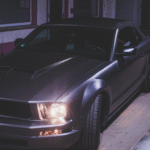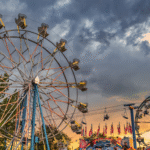Nestled in the misty hills of Shillong, the capital of Meghalaya, the Don Bosco Museum stands as a vibrant tribute to the rich cultures of Northeast India. This seven-story, hexagonal-shaped building isn’t just a museum—it’s a journey through the traditions, lifestyles, and histories of the region’s diverse indigenous communities. Known as the Don Bosco Centre for Indigenous Cultures (DBCIC), it’s a must-visit for anyone curious about the unique heritage of India’s Northeast. From colorful tribal attire to ancient tools and a breathtaking skywalk, the museum offers a deep dive into the soul of the “Seven Sisters” states—Assam, Arunachal Pradesh, Meghalaya, Manipur, Mizoram, Nagaland, and Tripura. Whether you’re a history buff, a culture enthusiast, or a traveler seeking something off the beaten path, this museum promises an unforgettable experience. Let’s explore what makes the Don Bosco Museum a gem in Shillong and why it’s worth a visit.
A Window into Northeast India’s Heritage
The Don Bosco Museum is more than a collection of artifacts; it’s a celebration of the vibrant, diverse cultures that define Northeast India. Spanning 56,000 square feet, the museum houses 17 galleries, each telling a unique story about the region’s indigenous tribes, like the Khasi, Jaintia, Garo, and Naga. You’ll find everything from traditional clothing to musical instruments, giving you a glimpse into the daily lives, beliefs, and customs of these communities. The museum, established in 2002 by the Salesian Missionaries and named after St. John Bosco, aims to preserve and promote the region’s heritage. Its modern design, crafted by architect Vivek Varma, uses natural light and open spaces to create an inviting atmosphere. With over 3,000 artifacts, it’s one of Asia’s largest cultural museums, drawing visitors from across India and beyond. A visit here feels like stepping into a living storybook of the Northeast’s past and present.
The Vision Behind the Museum
The museum was born from a dream to safeguard the fading traditions of Northeast India. Fr. Sebastian Karotemprel, a key figure in its creation, envisioned a space where the region’s cultures could be studied and celebrated. Opened to the public in 2003, it has since welcomed over a lakh of visitors, including dignitaries like the Princess of Thailand. The museum’s goal is to foster understanding and unity among the diverse tribes, making it a cultural bridge for locals and tourists alike.
A Hub for Research and Learning
Beyond its exhibits, the museum is a hub for scholars and students. The North Eastern Institute for Research in Anthropology (NEIRA) supports in-depth studies of the region’s cultures, while a library with 110,473 volumes offers a treasure trove of knowledge. From rare books to research papers, it’s a haven for anyone eager to dive deeper into the Northeast’s history. The museum also hosts workshops and cultural events, making it a lively center for learning and exchange.
The Architectural Marvel of the Museum
Walking up to the Don Bosco Museum, you can’t help but be struck by its unique hexagonal design. Designed by Vivek Varma, the seven-story structure is often called Shillong’s architectural pride. The building’s honeycomb-like layout maximizes space, with wide windows letting in natural light and fresh air. Each floor is thoughtfully designed to guide visitors through a journey of discovery, from the ground-level Naga house entrance to the top-floor skywalk. The museum’s layout is both functional and beautiful, with elevators for accessibility and open spaces that feel welcoming. It’s not just a place to see artifacts—it’s a space that invites you to linger, explore, and soak in the beauty of Shillong’s cultural and natural landscape.
The Skywalk Experience
One of the museum’s highlights is its seventh-floor skywalk, offering a 360-degree view of Shillong’s rolling hills and bustling city. Walking on the glass-floored path is thrilling, giving you a bird’s-eye view of the “Scotland of the East.” It’s the perfect spot to pause, take photos, and appreciate the city’s charm, especially during sunset when the hills glow with soft light.
Accessibility and Visitor Amenities
The museum is designed with everyone in mind. Elevators make it wheelchair-friendly, and clean washrooms are available on every floor. There’s a cozy cafeteria on the seventh floor serving local dishes like pork chops and bamboo shoot delicacies, alongside familiar Indian meals. A souvenir shop near the exit offers handmade crafts, local candy, and books, perfect for taking a piece of the Northeast home.
Galleries That Tell a Story
The heart of the Don Bosco Museum lies in its 17 galleries, each dedicated to a different aspect of Northeast India’s culture. From the Prehistory Gallery, which traces the origins of the region’s tribes, to the Music Gallery, showcasing instruments like the Morchang and Lemet, every exhibit is a window into a unique world. The galleries use multimedia presentations, fiber-glass figures, and interactive displays to bring the stories to life. You’ll see traditional attire like the Gamcha and Dawache, alongside tools like the Dao and Jebulu, offering insights into the tribes’ daily lives. The Food Gallery lets you taste authentic dishes, while the Agriculture Gallery highlights practices like step farming. Each gallery is a carefully curated blend of education and entertainment, making the museum a hit with visitors of all ages.
Standout Galleries to Explore
Some galleries steal the show. The Land and People Gallery dives into how the Northeast’s terrain shaped its tribes’ lifestyles, with sculptures and maps that make the history come alive. The Basketry Gallery showcases the region’s bamboo craftsmanship, a skill central to every tribe. The Our Neighbors Gallery explores cultures from nearby countries like Bhutan and Myanmar, showing the region’s interconnectedness. These galleries are perfect for anyone curious about the Northeast’s diversity.
Interactive and Family-Friendly Features
The museum is a hit with families, thanks to its interactive kiosks designed for kids. Touch-screen computers and multimedia displays keep young visitors engaged, while the mini-museum for children offers hands-on learning. Photography is allowed (without flash), so you can capture the vibrant displays. Whether you’re traveling with kids or just young at heart, the museum’s lively setup ensures there’s something for everyone to enjoy.
A Cultural Hub Beyond Exhibits
The Don Bosco Museum isn’t just about looking at artifacts—it’s a living, breathing center for cultural exchange. It hosts competitions for writers, musicians, and lyricists, fostering creativity among locals. The museum’s publications, like newsletters and research papers, share the Northeast’s stories with the world. Its calendar is packed with cultural activities, from dance performances to workshops, making it a vibrant space for community engagement. For researchers, the museum’s resources, including its vast library and NEIRA, are invaluable. It’s a place where the past meets the present, encouraging visitors to not just observe but connect with the region’s heritage. The museum’s commitment to peace and unity shines through, making it a symbol of cultural harmony.
The Role of the Salesian Missionaries
The Salesian Missionaries, who founded the museum, have a deep history of working with youth and communities. Named after St. John Bosco, their mission to educate and uplift is evident in the museum’s focus on cultural preservation. Their work extends beyond the museum, with programs supporting education and community development across the Northeast, making the DBCIC a beacon of hope and learning.
Connecting with the Community
The museum actively engages with locals through events like cultural festivals and art competitions. These activities bring tribes together, celebrating their shared heritage while highlighting their unique identities. Visitors can sometimes catch live performances of traditional dances or music, adding a dynamic layer to the museum experience. It’s a place where the community’s spirit comes alive.
Planning Your Visit
Ready to explore the Don Bosco Museum? It’s located in Mawlai, just 3 km from Shillong’s bustling Police Bazaar, making it easy to reach by taxi or bus. The museum is open Monday to Saturday, from 9:00 AM to 5:30 PM in summer (February to November) and 9:00 AM to 4:30 PM in winter (December to January). It’s closed on Sundays and select holidays like January 1, August 15, and Christmas week. Entry fees are affordable: INR 100 for Indian adults, INR 200 for foreigners, and INR 50 for Indian students. Plan to spend 2-3 hours for a thorough visit, or half a day to soak it all in. Wear comfortable shoes, bring a water bottle, and get ready for a cultural adventure.
Getting There and Around
From Shillong’s city center, a quick 20-minute taxi ride gets you to the museum. If you’re flying in, Umroi Airport is 35 km away, with taxi services available. For those coming from Guwahati, it’s a 104 km drive. The museum’s location near the Sacred Heart Theological College makes it a convenient stop on any Shillong itinerary. Public buses and shared cabs are also budget-friendly options.
Best Time to Visit
March to June is ideal, with pleasant weather (15°C to 25°C) perfect for exploring Shillong’s hills. Monsoon (July to September) brings rain, so pack a raincoat if you visit then. Winter offers crisp air but shorter museum hours. No matter the season, the museum’s indoor setup ensures a comfortable visit, and the skywalk’s views are stunning year-round.
Why the Don Bosco Museum Matters
The Don Bosco Museum does more than display artifacts—it preserves the soul of Northeast India. In a region with nearly 300 cultural communities, it’s a vital space for documenting and sharing their stories. The museum fosters pride among locals while educating outsiders about the region’s diversity. Its focus on peace and unity resonates in a world often divided by differences. For travelers, it’s a chance to connect with a lesser-known part of India, rich with history and heart. Whether you’re marveling at the exhibits, savoring local cuisine, or gazing from the skywalk, the museum leaves you with a deeper appreciation for the Northeast’s vibrant tapestry.
A Lasting Impact on Visitors
Visitors often leave the museum with a sense of awe and connection. Reviews on platforms like Tripadvisor praise its well-kept galleries and informative displays, with many calling it a highlight of their Shillong trip. Some critique its portrayal of tribal life as overly simplified, but most agree it’s a must-see for understanding the Northeast. The museum’s blend of education and engagement makes it a memorable stop.
A Call to Explore
If you’re planning a trip to Shillong, don’t miss the Don Bosco Museum. It’s more than a tourist spot—it’s a cultural journey that brings the Northeast’s heritage to life. Whether you’re drawn to the artifacts, the skywalk, or the chance to taste tribal cuisine, this museum delivers an experience that’s both enriching and inspiring. Book your visit, step into the heart of Northeast India, and discover a world of stories waiting to be told.



